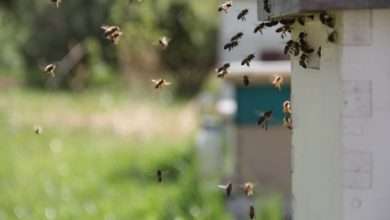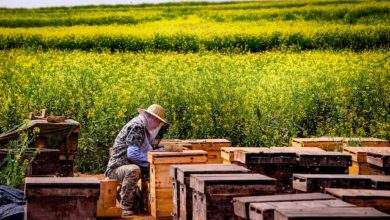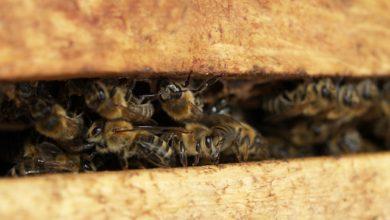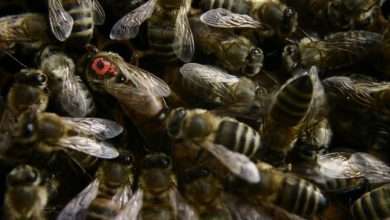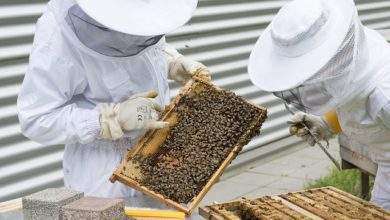The Importance of Bees in Agriculture
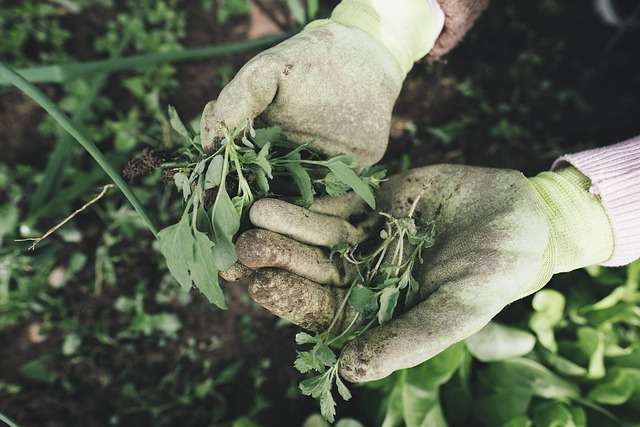
Agriculture is one of the most important sectors of any economy. It provides food and jobs for millions of people and forms the basis of global trade. But the success of a crop relies on more than just soil and irrigation; it also depends on pollinators such as bees. In this article, we’ll look at the importance of bees in agriculture and why these little creatures are so essential to a healthy food supply.
Role of Bees in Pollination
Pollination is the transfer of pollen from the male part of the flower to the female part of the flower. Pollination is essential for plant reproduction and vital to agriculture production. Pollination results in the production of seeds, fruits, and nuts. This creates a sustainable production of food, which is necessary to feed the growing population.
Pollination is critical for agriculture, as it increases the quality and yield of crops. Farmers rely on pollinators to increase the productivity and profitability of their crops. Without pollination, crop production would be severely affected, leading to food shortages and economic loss.
Bees are one of the most efficient pollinators in agriculture. Bees transfer pollen from plant to plant as they collect nectar and pollen for their colonies. This activity results in better-quality fruits and vegetables, higher yield, improving the overall health of crops.
In addition to commercial food crops such as apples, strawberries, and blueberries, bees play a substantial role in specialty crops like almonds, cherries, and melons. Without bee pollination, these crops would significantly decrease in production, affecting farmers’ livelihood.
Threats to Bee Populations
However, bee populations are threatened by various factors. These threats include climate change, habitat loss, pesticides, and diseases.
Explanation of Threats to Bees
Climate change can affect the timing of flower blooms and the availability of food for bees. Habitat loss occurs when natural areas are converted to agricultural or urban land use. Pesticides can cause harm to bees, affecting their nervous systems and reducing their ability to communicate and navigate. Lastly, diseases can infect bees, causing them to die off in large numbers.
Impact of Threats on Agriculture
The decline in bee populations has a significant impact on agriculture. Without bees, the pollination of key crops such as almonds, apples, and blueberries would become challenging.
Causes of Decline in Bee Populations
Bees are declining due to various reasons. These include the use of pesticides, loss of habitat, and climate change. Pesticides can be harmful to bees, as they can weaken and kill them. This, coupled with the loss of habitat due to deforestation, can cause bees to struggle to survive.
Explanation of Effects of Pesticides on Bees
Pesticides contain chemicals that can kill bees or reduce their ability to forage and navigate. Often, these chemicals weaken bees, leaving them vulnerable to other threats.
Importance of Bee Diversity in Agriculture
Explanation of Bee Diversity
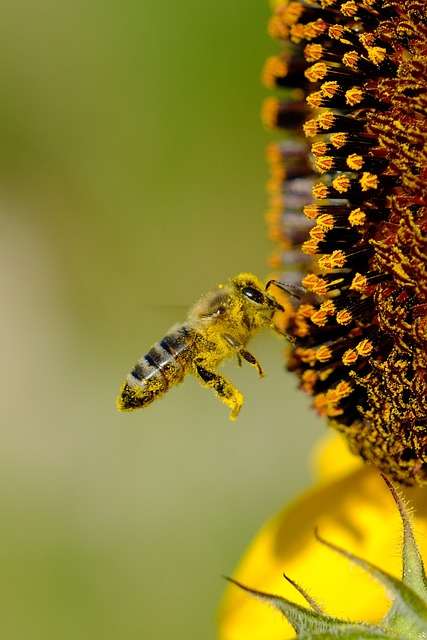
Bee diversity refers to the different species of bees found in the world. There are over 20,000 species of bees, and each one plays a vital role in pollinating different types of plants. The variety of bees is essential because it ensures that no single type of bee can dominate the pollination process, and different bees have different preferences for nectar and pollen sources.
Importance of Different Types of Bees in Agriculture
The importance of different types of bees in agriculture cannot be overstated. Bees are responsible for pollinating a vast variety of crops, including fruits, vegetables, berries, and nuts.
The different species of bees have different physical characteristics, such as body size and length of tongue, that allow each species to collect pollen and nectar from different types of plants.
For example, bumblebees have a longer tongue than honeybees, which makes them more efficient at pollinating flowers with a deeper nectar source. Solitary bees are better at pollinating fruit trees and vegetables that have a lower number of flowers.
Examples of Crops that Rely on Different Types of Bees:
- Almonds: Almonds are entirely dependent on bees for pollination. Almond blossoms bloom early, and honeybees, bumblebees, and solitary bees are essential pollinators.
- Blueberries: Blueberries are also dependent on bees for pollination. Bumblebees are particularly important for blueberry pollination as they are capable of vibrational pollination, which is required for the flowers to release pollen.
- Squash: Squash flowers have a short lifespan, and female flowers need to be pollinated within a few hours of opening. Squash bees are solitary bees that are the most efficient pollinators of squash flowers.
Efforts to Protect Bee Populations
Thankfully, there are many efforts underway to protect bee populations and ensure that they continue to thrive. One of the most important steps being taken is the reduction of pesticide use.
Many pesticides are harmful to bees, and can cause them to become disoriented, disoriented, and even die. By reducing pesticide use, we can help to protect bee populations and ensure that they can continue to pollinate our crops.
Another important effort is the creation of bee-friendly habitats. This involves planting flowers, shrubs, and trees that are attractive to bees and provide them with the food and shelter that they need. Many cities and towns are now including bee-friendly habitats in their parks and public spaces, which is helping to create a more welcoming environment for bees.
Examples of Organizations and Initiatives Protecting Bees
There are many organizations and initiatives that are working to protect bee populations. One example is the Pollinator Partnership, which is a non-profit organization that works to promote the health of pollinators, including bees, through research, education, and conservation efforts.
The organization has many programs and initiatives that focus on protecting bee populations, such as the Bee-Friendly Farming program, which helps farmers to create pollinator-friendly habitats on their land.
Another example is the Xerces Society for Invertebrate Conservation, which is a non-profit organization that works to protect invertebrates, including bees, through research, education, and conservation efforts. The organization has many programs that focus specifically on bee conservation, such as the Western Monarch and Pollinator Conservation Fund, which provides funding for conservation projects that protect monarch butterflies and pollinators like bees.
Importance of Public Awareness and Action
While organizations and initiatives are important for protecting bee populations, it is also important for the public to be aware of the issue and take action.
By planting bee-friendly habitats in our own yards and gardens, reducing our use of pesticides, and supporting organizations that are working to protect bees, we can all play a role in ensuring that bee populations continue to thrive. Public awareness and action are critical for protecting bee populations and ensuring the future of our food supply.
It is crucial to protect bees and their habitat to ensure food security and maintain a healthy ecosystem. Farmers, beekeepers, governments, and individuals can take steps to protect bees, such as reducing pesticide use, planting bee-friendly flowers, and supporting conservation efforts.
Conclusion
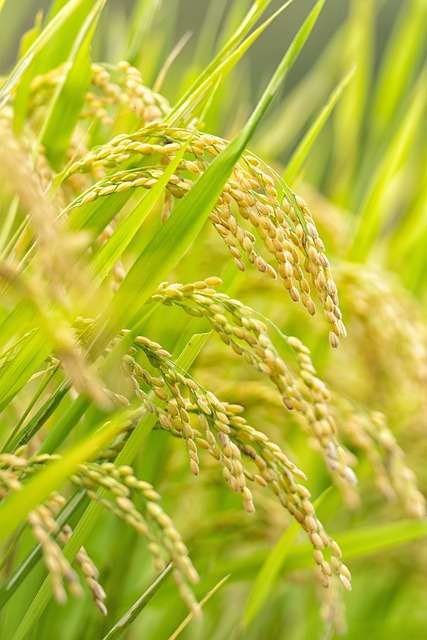
The role of bees in agriculture cannot be overstated. They are vital to the world’s food supply, the environment, and the economy. It is essential to take action to protect bees and their habitat, ensuring they can continue to play their critical role in agriculture and our world.
FAQ
What are the benefits of promoting beekeeping in agriculture?
- Promoting beekeeping in agriculture can lead to higher yields, better crop quality, and a more sustainable food supply. In addition, it can help support the local ecological system by promoting the growth of wildflowers and other beneficial plants.
Why are honey bees the most useful pollinators to farmers?
- Honey bees are the most useful pollinators to farmers because of their unique biology and behavior. They are social insects that live in large colonies and have a highly organized system of foraging and pollination. Additionally, honey bees have the ability to communicate with each other and share information about the location of food sources.
What is the economic impact of honey bee pollination on agriculture?
- Honey bee pollination has a significant economic impact on agriculture, accounting for over $15 billion in crop value annually in the United States alone. Without honey bee pollination, many crops would not be commercially viable.
How can individuals help support bee populations and agriculture?
- Individuals can support bee populations by planting flowers and other plants that are attractive to bees, reducing pesticide use, and supporting local beekeepers by purchasing local honey and beeswax products.
How do farmers protect honeybees during the pollination process?
- Farmers protect honeybees during the pollination process by reducing pesticide use, providing pollinator-friendly habitat, and working with beekeepers to ensure the health and safety of their colonies.
Do bees produce more than just honey?
- Bees also produce beeswax, which can be used for a variety of purposes such as candle-making and lotion-making. Beeswax has antibacterial and anti-inflammatory properties, making it a popular ingredient in natural health products.
